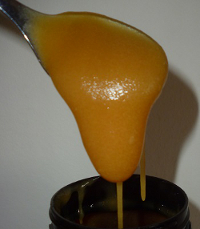
Have you ever wondered while looking at a jar of delicious manuka honey how it actually came to get there? If what springs to mind is the idea of beekeeping as a somewhat quaint and idyllic past time that is the preserve of kindly clergyman tending a few beehives with nothing more than a veiled hat to keep away the bees, you would be very wrong!
These days, manuka honey is a serious and big business, and like all businesses that evolve the manuka honey industry makes use of a surprising amount of high tech at all stages of the honey production process.
Location, location, location
Of course bees need to feed off manuka trees to make manuka honey and that’s where it starts to get complicated and technical, especially as many of the large tracts of manuka trees in New Zealand are in incredibly remote – as well as pristine – rural areas.
Some of the larger honey producers use GPS locators to identify the site of the hives and all sites have to be registered with the New Zealand government. Given the remote location of some of the hives, helicopters are also used to both access the hives and transport them.
Extraction
Once the bees have done their work, manuka honey has to be extracted from the hive. At this stage too there is plenty of high tech as it is important to maintain the purity of the honey, so many of the top producers have invested in hi-tech extraction facilities that would be equally at home in a sci-fi movie, as the extraction takes place behind airlocked doors. This is important to ensure no contaminants can enter the honey so preserving its purity, which is necessary for manuka honey that is used in medical products for treating wounds, for example.
Testing labs
Testing forms an integral role in genuine manuka honey as producers have to test the honey to find out its antibacterial level and they may also test for other markers naturally occurring in the honey. Some of the larger producers have their own sophisticated hi tech laboratories to carry out the work, while smaller producers have their honey tested at accredited laboratories. It is all very serious and high tech, which partly accounts for the higher cost of the honey.
Tracking apps
The technology doesn’t stop their either as some manuka honey producers have developed a tracking app so that consumers can identify the jar and batch of honey they purchase. Steens Manuka Honey, for example, has Track and Trace software so consumers can type in the code on the jar of honey and use it to see exactly where the honey came from. This app is part of Steens’ Hive Tracker software where information on the hives and beekeeping is integrated with a GPS point to create a detailed database of manuka honey and where it came from.
So you see, manuka honey is also hi tech honey but that is why it is important to understand a little about the labels to make sure you are buying a genuine manuka honey that has been tested.
